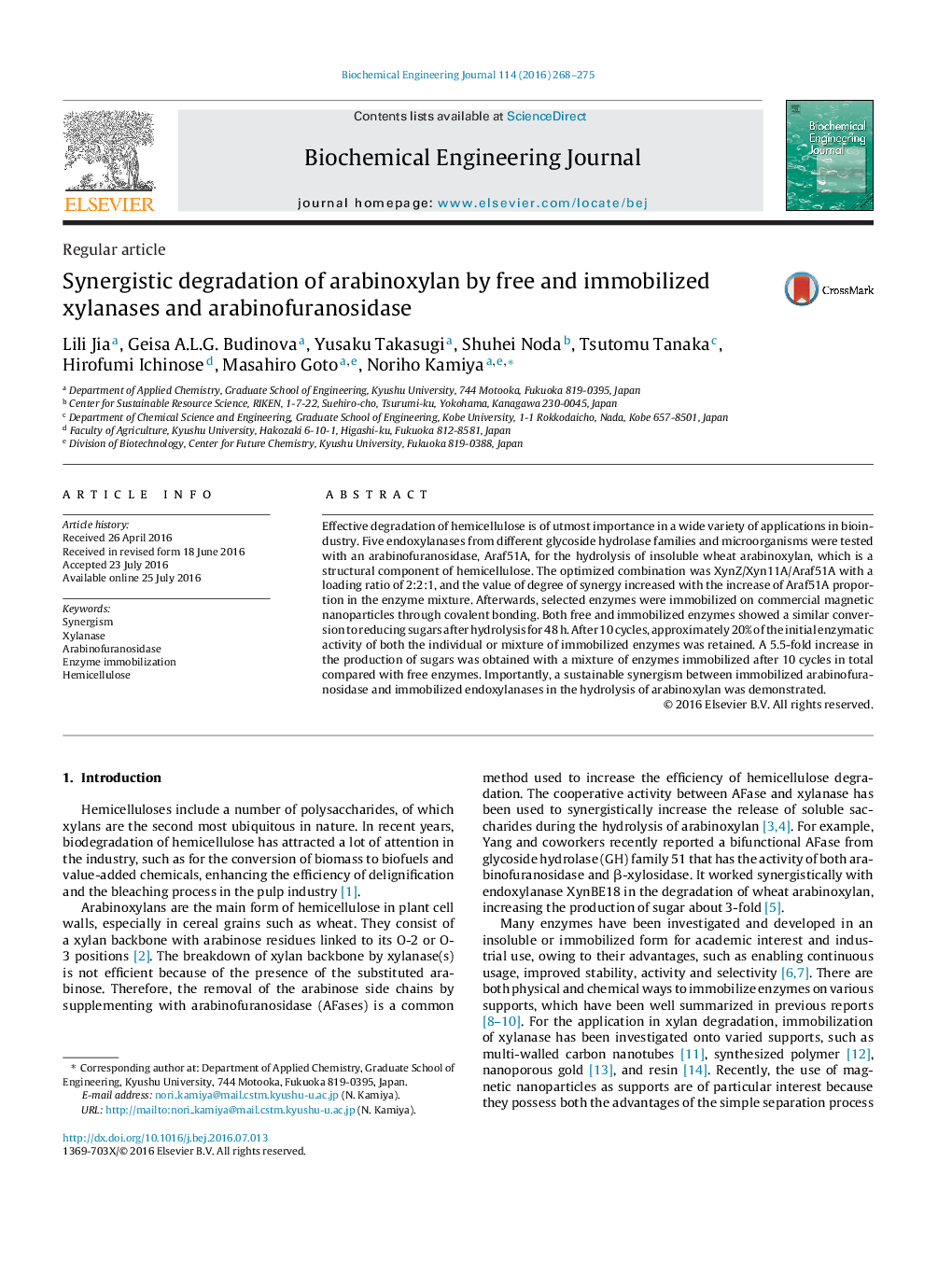| Article ID | Journal | Published Year | Pages | File Type |
|---|---|---|---|---|
| 2698 | Biochemical Engineering Journal | 2016 | 8 Pages |
•Synergism between immobilized endoxylanases and arabinofuranosidase was shown.•Enzyme loading ratio affected the synergistic action to hemicellulosic substrates.•Continued synergism between the immobilized enzymes was present after ten cycles.•Recyclable enzymes contribute to cost-effective catalyst utilization in bioindustry.
Effective degradation of hemicellulose is of utmost importance in a wide variety of applications in bioindustry. Five endoxylanases from different glycoside hydrolase families and microorganisms were tested with an arabinofuranosidase, Araf51A, for the hydrolysis of insoluble wheat arabinoxylan, which is a structural component of hemicellulose. The optimized combination was XynZ/Xyn11A/Araf51A with a loading ratio of 2:2:1, and the value of degree of synergy increased with the increase of Araf51A proportion in the enzyme mixture. Afterwards, selected enzymes were immobilized on commercial magnetic nanoparticles through covalent bonding. Both free and immobilized enzymes showed a similar conversion to reducing sugars after hydrolysis for 48 h. After 10 cycles, approximately 20% of the initial enzymatic activity of both the individual or mixture of immobilized enzymes was retained. A 5.5-fold increase in the production of sugars was obtained with a mixture of enzymes immobilized after 10 cycles in total compared with free enzymes. Importantly, a sustainable synergism between immobilized arabinofuranosidase and immobilized endoxylanases in the hydrolysis of arabinoxylan was demonstrated.
Graphical abstractFigure optionsDownload full-size imageDownload as PowerPoint slide
